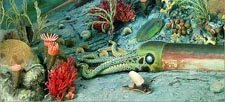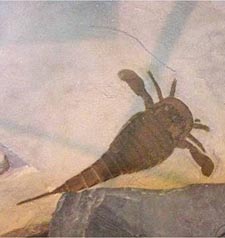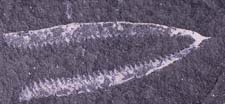 |
 |
 |
 |
 |
Produced
by the Population Genetics and Evolution class, Furman University |
||||
 |
 |
 |
 |
 |
Produced
by the Population Genetics and Evolution class, Furman University |
||||
 |
The
Ordovician |
 |
||
 |
Although many animal phyla trace their origins back to the Cambrian Period, it was not until the Ordovician when many of these groups radiated and diversified. Clam-like brachiopods became abundant, and the molluscs of the Ordovician radiated into predatory forms like the nautiloid genus Orthoceras, and the apex predator, Cameroceras. Large expanses of shallow seas may have stimulated ecological productivity and the radiation of reef forming organisms, such as corals and stromatoporoid sponges. The evolutionary response to the evolution of carbonate reefs and shells is represented by the "bioerosion revolution"; the evolution of organisms that could drill through shells or bore into carbonate as a predation strategy or to anchor to the hard substrate. There are also radiations of deuterostome organisms, including crinioid echinoderms, graptolite hemichordates, and the first of the fish radiations - the jawless ostracoderm vertebrates like Arandaspis. The arthropods were radiating, as well, with a rich diversity of ornately spined trilobites appearing. Some of the most impressive fossils are the predatory, scorpion-like eurypterids; including the fearsome Megalograptus. And, although arthropods took excursions on land in the late Cambrian, photosynthestic organisms only began to colonize land in the Ordovician. |
 |
||
| Above: Eurypterid fossil; Photo by: R. Weller Below, Spriggia painting. Ordovician scene from: Universe Review. | Above: Paraceraurus fossil; from: Carnegie Institute of Science Below: Didymograptus fossil, from: The Website for Wesh Heritage and Culture |
|||
 |
 |
|||